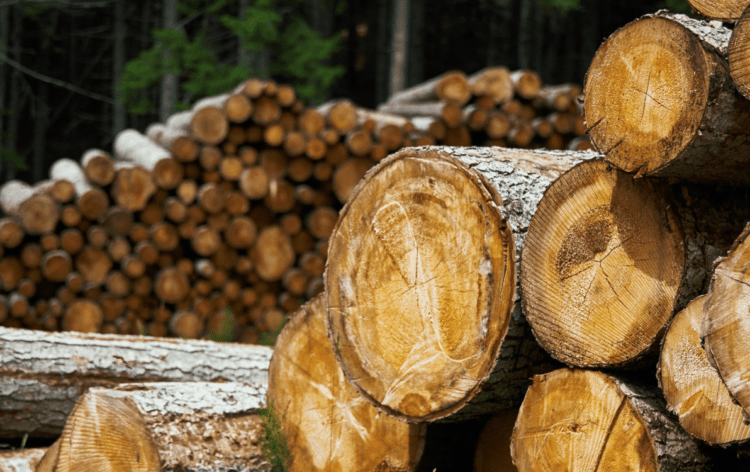Navigating the Ever-Changing Landscape: Trends in the Lumber Commodity Market

In the vast realm of commodities, few markets have witnessed the kind of tumultuous journey that the lumber industry has embarked upon. Lumber, the versatile building material that has been a cornerstone of construction for centuries, has become a subject of intense scrutiny and fascination in recent times. This article delves into the labyrinthine world of the lumber commodity market, exploring the factors that drive its volatility, the ripple effects of its fluctuations, and the intricate web of supply and demand that shape its destiny. From timber harvests and environmental concerns to economic forces and international trade, this captivating market holds sway over industries and economies worldwide.
Trends in Lumber Commodity Market
The lumber commodity market holds immense popularity and demand globally, serving as a critical component in numerous industries and construction projects. Its popularity arises from its essential role as a building material, widely used in residential and commercial construction, infrastructure projects, furniture manufacturing, and even as raw material for paper production. The market’s significance becomes particularly evident during times of rapid urbanization and economic growth when construction activity surges.
Recent trends in the lumber commodity market have showcased both extreme volatility and unprecedented demand. In 2020, the market experienced an extraordinary surge in demand driven by factors such as low mortgage rates, increased home renovation projects, and a surge in do-it-yourself (DIY) activities during the COVID-19 pandemic. This sudden spike in demand, coupled with production disruptions caused by the pandemic, led to soaring prices and supply shortages. The resulting price increases captured headlines and fueled discussions on the lumber market’s influence on overall inflation rates.
Another notable trend is the growing focus on sustainability and environmental considerations in the lumber industry. Consumers and businesses alike are increasingly seeking responsibly sourced lumber and demanding eco-friendly alternatives such as certified sustainable wood products. This shift in consumer preferences has prompted industry players to adopt sustainable forestry practices and explore innovative solutions like engineered wood products, which offer both environmental benefits and structural versatility.
The cost of lumber has experienced significant fluctuations in recent years. In mid-2020, lumber prices reached all-time highs, with benchmark prices surpassing $1,500 per thousand board feet, more than quadrupling the pre-pandemic levels. However, as the global supply chain adjusted to meet the surging demand, prices began to stabilize and gradually declined. By mid-2021, lumber prices had retreated significantly but remained above historical averages.
To illustrate the impact of lumber prices, consider the example of new home construction. Higher lumber costs translate into increased construction expenses, resulting in higher home prices and potentially deterring prospective buyers. Similarly, businesses reliant on lumber, such as furniture manufacturers or home improvement retailers, face challenges in managing costs and maintaining profit margins during periods of price volatility.
In conclusion, the lumber commodity market is a highly sought-after and influential sector, with its demand driven by construction, infrastructure development, and various industries. The market’s recent trends reflect the dynamic interplay between supply and demand, environmental considerations, and the global economy. While price fluctuations can be substantial, the lumber market’s enduring significance underscores its critical role in shaping the world we build and inhabit.
Is Lumber Trading Becomes Less Popular?
The lumber commodity market presents several promising opportunities and future predictions despite the challenges it has faced. While the market experienced significant volatility and supply constraints in recent years, there are indications of a more stable and resilient future.
One of the main opportunities lies in the growing demand for sustainable and environmentally friendly construction materials. As the world becomes increasingly conscious of the need for eco-friendly practices, the lumber industry can seize the opportunity to position itself as a sustainable solution. By adopting responsible forestry practices, implementing certification programs, and investing in research and development, the industry can cater to the rising demand for green building materials. Furthermore, technological advancements and innovation offer avenues for growth and efficiency in the lumber market. Advancements in precision forestry techniques, including remote sensing and data analytics, can optimize timber harvesting, reduce waste, and improve overall resource management. Additionally, the development of engineered wood products, such as cross-laminated timber (CLT) and laminated veneer lumber (LVL), opens up new possibilities for sustainable construction and architectural design.
Despite occasional supply shortages and price fluctuations, the overall demand for lumber is not waning significantly. Construction activities, infrastructure development, and housing needs continue to drive the demand for this versatile material. Moreover, the global population is projected to grow, particularly in urban areas, further stimulating the demand for housing and infrastructure.
The future predictions for the lumber commodity market remain positive. With an increasing emphasis on sustainability and eco-conscious practices, the lumber industry has the opportunity to align itself with these trends and position itself as a crucial player in the green economy. Additionally, the integration of technology and innovation can enhance productivity, efficiency, and product quality, further bolstering the market’s attractiveness.
While challenges may arise, such as potential fluctuations in demand or regulatory changes, the long-term prospects for the lumber commodity market indicate resilience and the potential for continued growth and relevance in the construction and manufacturing sectors.


























Comments (0 comment(s))